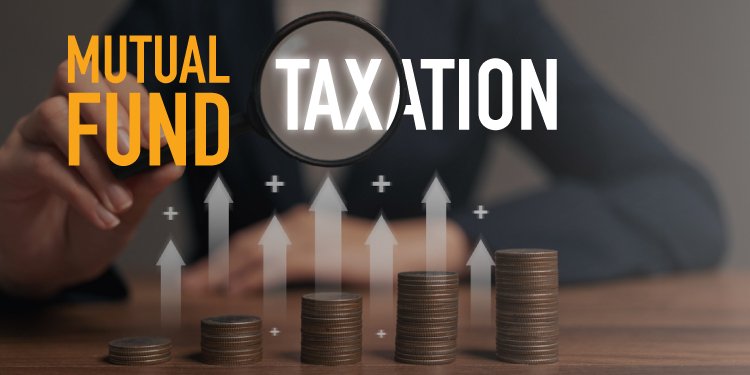Mutual Fund Taxation – Can I save taxes by investing in a mutual fund?

Today, many people choose investment options like mutual funds to increase their wealth over time. It’s a popular choice among investors. However, did you know that investing in funds can also be a smart tax-saving strategy? Being aware of how mutual fund taxation works can empower you to make wise choices and make the most of saving taxes effectively.
This blog post will discuss how mutual funds are taxed, the different kinds of tax-saving mutual funds available, and how they can play a role in your overall financial planning.
Taxation of Mutual Funds in India
- Equity Mutual Funds
When you decide to sell your units in a fund within a year of buying them, this triggers Short Term Capital Gains (STCG), which are taxed at a rate of 20% plus any applicable cess. If you keep your investment in equity mutual fund units for over a year any profits earned are considered as Long-Term Capital Gains (LTCG). LTCGs above Rs. 1.25 lakh in a year are subject to a 12.5% tax rate (plus additional cess) without the advantage of indexation.
- Debt Mutual Funds
If you decide to sell your units from debt funds within three years of acquiring them, the profits generated are classified as Short-Term Capital Gains (STCG). These gains will be subject to taxation based on your income tax bracket. If you keep your debt mutual fund units for over three years and earn profits from them during that time span, it qualifies as Long-Term Capital Gains (LTGC). Such gains are subject to a 12.5% tax rate, with the advantage of indexation to decrease the tax liability.
- Hybrid Mutual Funds
Hybrid mutual funds have tax treatments depending upon the balance between their investments in equity and debt securities. If the equity component makes up more than 65% they are classified and taxed as equity funds; otherwise, they fall under the category of debt funds, for taxation purposes.
- Liquid Mutual Funds
Liquid mutual funds belong to the category of debt funds that focus their investments on short-term money market instruments and are subject to the same tax regulations as other debt mutual funds. Short Term Capital Gains (STCG) are taxed based on your income tax bracket, while Long Term Capital Gains (LTCR) face a 12.5% tax rate along with indexation benefits.
Tax Saving Mutual Funds
- Tax Benefits Under Section 80C
Tax-saving mutual funds, referred to as Equity Linked Savings Schemes (ELSS) provide an advantage. They assist in tax savings and facilitate the growth of your investment portfolio by leveraging market opportunities.
- Lock-in Period
ELSS investments require you to keep your money locked in for a minimum of 3 years before you can withdraw it again, aiming to encourage investing habits and potentially yield greater returns than conventional tax-saving options such as Fixed Deposits (FDs) or Public Provident Funds (PPF).
- Tax Treatment of Gains
ELSS is categorised within Section 80 of the Income Tax Act. Permits individuals to avail deductions of up to Rs. 1.5 lakh annually from their taxable income through investments, in ELSS which qualify for tax benefits thereby lessening your tax obligation effectively.
Advantages of Putting Money Into Tax-Saving Mutual Funds
- Dual Advantage
Investors often find tax-saving funds appealing because they not only offer tax deductions under Section 80c but also have the potential for capital growth, making them a great option for those aiming to save on taxes and build their wealth over time.
- Diversification
ELSS funds mainly invest in stocks to diversify across sectors and companies for risk management and potentially increased profits.
- Expert Management
When you invest in funds, your money is overseen by experienced fund managers who specialise in choosing and overseeing investments to help you achieve the best possible returns on your investment.
- Liquidity
ELSS funds provide the advantage of liquidity once the three-year lock-in period is compared to other tax-saving options with longer lock-in periods. This allows you to withdraw your investment when necessary. However, it is usually recommended to keep invested for the run to take advantage of market growth opportunities.
Factors to Keep in Mind Before Making an Investment
- Investment Horizon
When selecting funds for your investment portfolio, it’s important to factor in your investment horizon. For ELSS funds specifically be aware that they come with a three-year commitment. Make sure you are comfortable with this lock-in period before making your decision.
- Risk Tolerance
Before choosing equity funds like ELSS that involve stock market exposure and higher risk levels compared to other options out there for new investors. Think twice about your risk tolerance before taking the plunge!
- Tax Planning
Make sure to include your investments in tax-saving funds as part of your comprehensive tax planning approach and assess how these investments align with your broader financial objectives and tax-saving requirements.
- Performance of Funds
Before you invest in liquid funds, do some research on their performance history, fund manager expertise and expense ratios to find a fund that suits your investment goals.
- Expense Ratio
The expense ratio represents the fee imposed by the fund for overseeing your investments. It’s worth comparing the expense ratios of funds since lower ratios can lead to increased net returns.
Conclusion
Investment in tax-saving mutual funds provides various opportunities to decrease your taxable income and increase your wealth over time. Choosing tax-saving funds like ELSS can lead to tax benefits under Section 80c and favourable treatment of capital gains.
It’s important to think about aspects like how you want to invest and how much risk you’re comfortable with before deciding where to put your money in terms of mutual funds. This way you can make choices that align with your financial goals and give you the chance to save on taxes while seeing your money grow over time.






